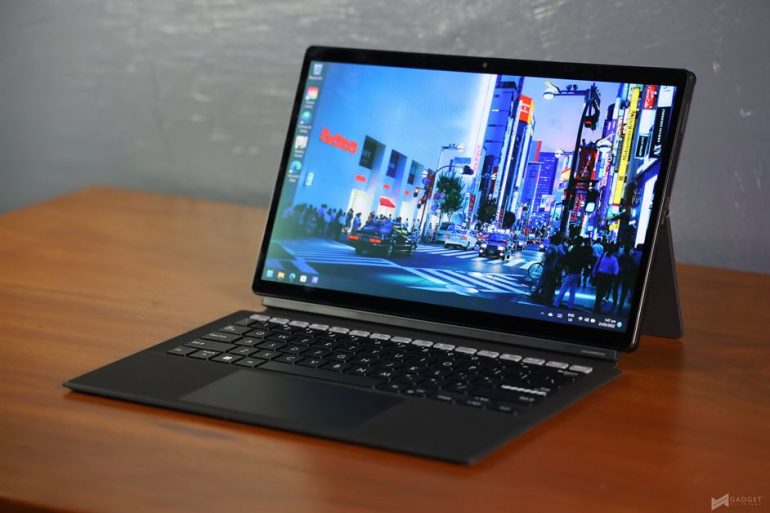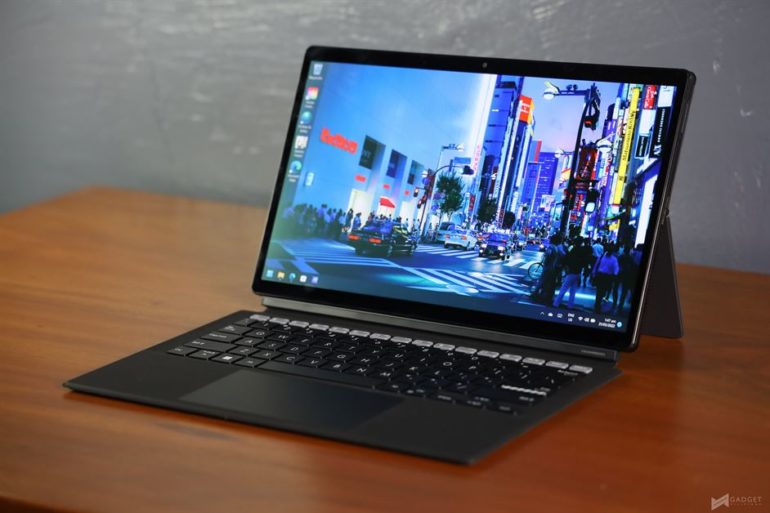
ASUS has continued to impress us with its yearly release of devices, not just for its gaming lineup, but also on the productivity side of things, especially on the design part, and this new addition to its Vivobook lineup is no exception. Welcome, the ASUS Vivobook Slate 13 OLED, a two-in-one device pegged for light productivity and media consumption.
We’re no strangers to laptops with a separate keyboard. Microsoft Surface Pro? Flow Z13? Well, I can see that they wanted to offer something of the same core design, but for a more accessible price tag. But did it go well? let’s find out.
Apart from the unit itself, you get the detachable keyboard, an ASUS Pen 2.0, the usual documentation, and a nice-looking bag. I wish every laptop had this kind of premium packaging.
Specifications
| Display | 13.3-inch FHD OLED 16:0, 0.2ms response time, 550 nits peak brightness, 100% DCI-P3 |
| PANTONE Validated, VESA CERTIFIED Display HDR True Black 500, TÜV Rheinland-certified, Touch Screen | |
| Processor | Intel Pentium Silver N6000 |
| Graphics | Intel UHD Graphics |
| RAM | Up to 8GB LPDDR4X |
| Storage | Up to 256GB M.2 NVMe PCIe 3.0 SSD |
| Camera | Front – 5MP |
| Rear – 13MP | |
| Keyboard | Soft Keyboard, 1.4mm Key Travel |
| Audio | Smart Amp Technology, 4-Way Stereo Speakers, Built-In Array Microphone |
| Network | Wi-Fi 6 |
| Bluetooth | 5.2 |
| Battery | 50WHrs, 3S1P, 3-cell Li-Ion |
| Power Supply | Type-C, 65W AC Adapter |
| Weight | .78kg (1.72 lbs) |
| Dimensions | 30.99 x 19.00 x 0.79 ~ 0.79 cm (12.20″ x 7.48″ x 0.31″ ~ 0.31″), W x D x H |
| 30.99 x 19.00 x 0.82 ~ 0.80 cm (12.20″ x 7.48″ x 0.32″ ~ 0.31″), W x D x H |
What’s in the Box?
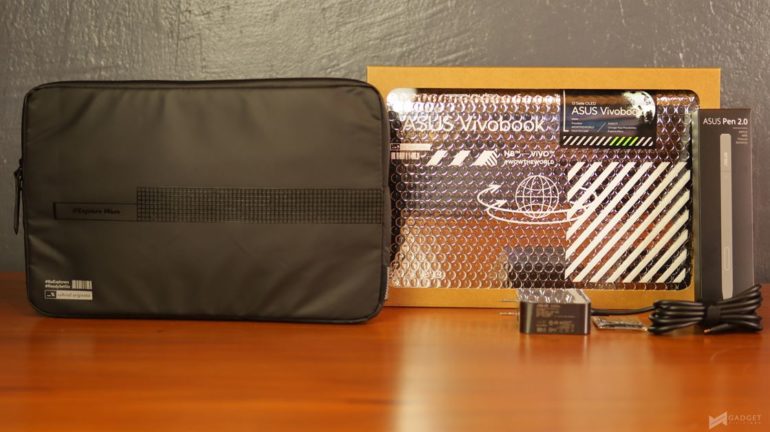
Design and Build Quality
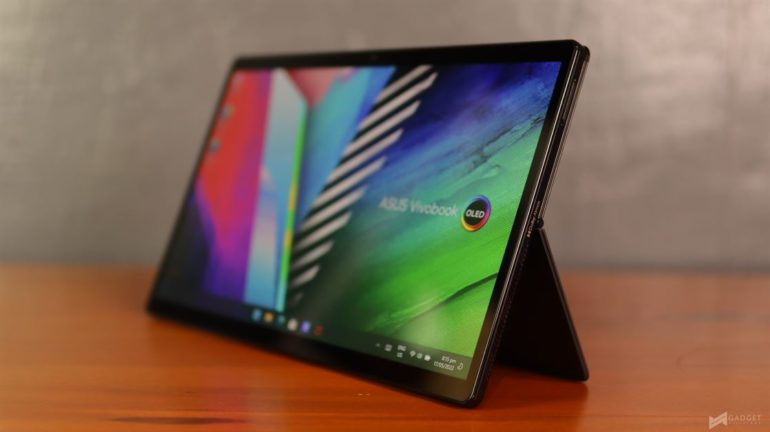
Like any 2-in-1 of its class, the Vivobook Slate 13 OLED can be used as a stand-alone tablet, or as a laptop when you connect the keyboard. Again, this is a full-fledged Windows 11 device, so unlike your usual tablet, you’ll be able to natively run apps like Office and Photoshop in their full glory.
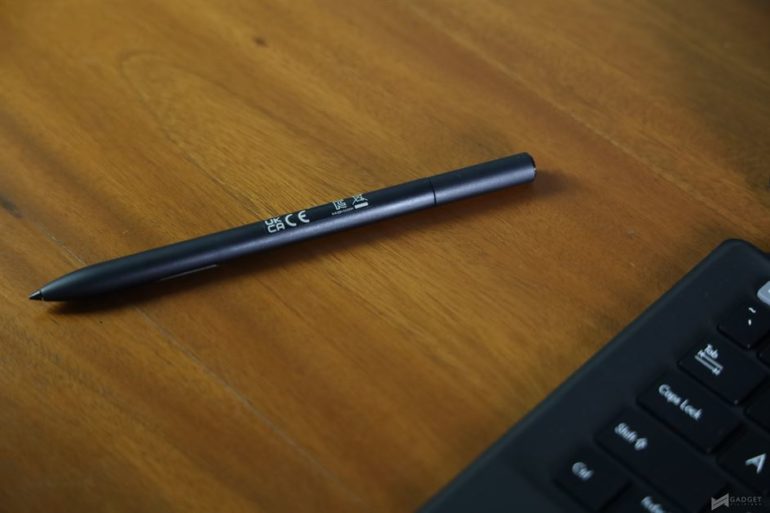
It’s also touch capable, which means using a compatible Pen like the ASUS Pen 2.0, a creative will be able to utilize the tablet for things like photo editing, or drawing. The responsiveness isn’t the best, but it’s enough for some casual creativity and note-taking. Unlike most laptops that only have a front camera, this one has a 13MP rear camera.
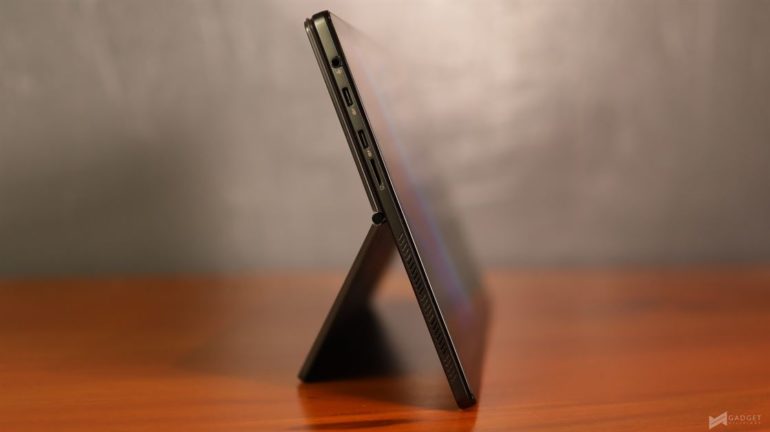
There’s also room for connecting external devices – you get 2 USB 3.2 Gen 2 Type-C ports which support power delivery and DisplayPort, a microSD card reader, and a 3.5mm combo jack.
I wish that there was at least one USB Type-A port, but I guess that wasn’t possible due to how thin this thing is. The consequence is that you’ll probably have to bring a dongle. The power button also acts as a fingerprint scanner.
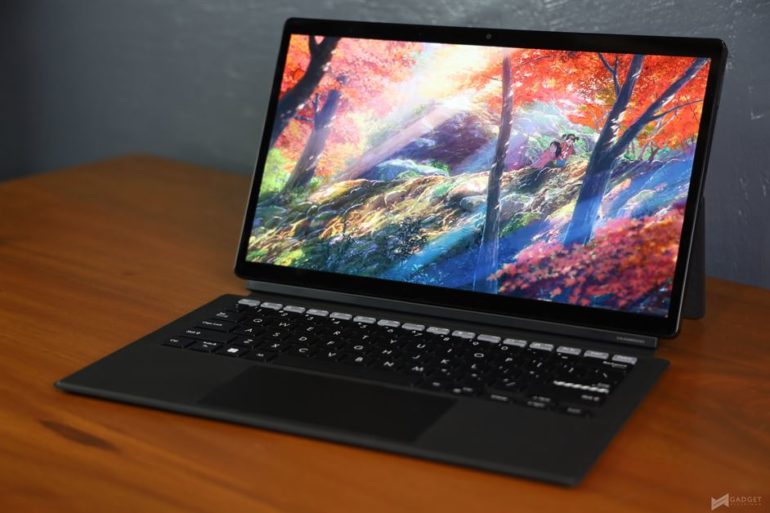
ASUS has gone for OLED screens on a lot of its recent productivity laptops, and so is this one. It’s 13.3-inch OLED panel has a 16:9 aspect ratio, 1080p resolution, a peak brightness of 550 nits, and covers 100% of the DCI-P3 color gamut. It’s PANTONE-Validated, TUV Rheinland Certified, and is protected by Gorilla Glass.
Now, with all those jargons out of the way, it’s certainly worlds apart compared to a typical IPS display. The deep blacks, the rich colors, it’s just on another level. OLED also maintains good color reproduction regardless of the brightness level, and allows for more details in dark scenes, making media consumption, and to an extend, even working, a visual treat.
The only issue I have here, is the glossiness, which means you’ll see a reflection of what’s behind you at times, which can be annoying in some instances.
The detachable keyboard connects and self-aligns using magnetic pins in the middle. There’s no backlighting, so you’ll probably have to rely on muscle memory when typing in low light conditions. As for typing experience, there’s a soft feeling with almost no audible clicks. It’s nowhere near a full mechanical keyboard, but it does feel comfortable to type on this keyboard. You also miss out on the ErgoLift hinge, which slightly raises the keyboard for a more natural and comfortable feel.
Performance
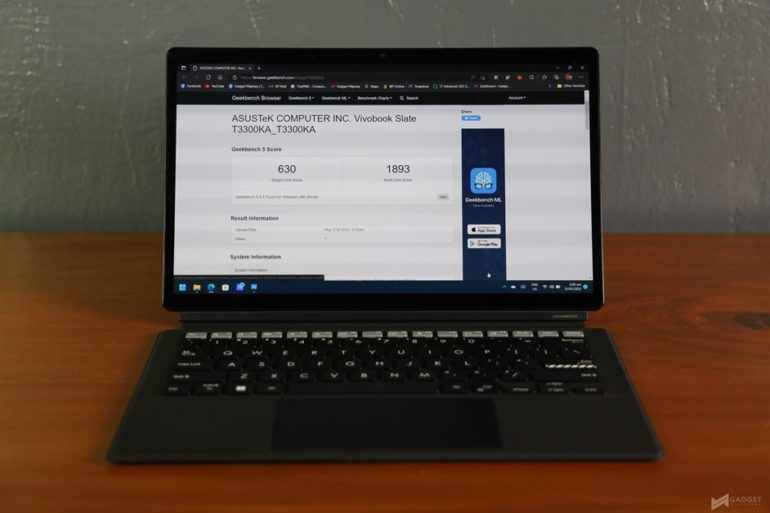
Now, this is where things get even more interesting. ASUS has chosen to equip this laptop with not an i7, not an i5, not even an i3 processor, but a quad-core Intel Pentium Silver N6000. Now, there could be a few reasons for this – to keep the pricing down, or for power efficiency.
Right off the bat, you can tell that this laptop was made mostly for light tasks. In short, documents, spreadsheets, presentations, media consumption, social media, and possibly a bit of photo editing.
The review unit I have has 8GB of LPDDR4X RAM, which I don’t think is the most ideal, but is certainly better than getting the 4GB variant. Can you multi-task on this? Yes. But not without occasional lag in between, like when switching between tabs in Edge browser, among others.
Software
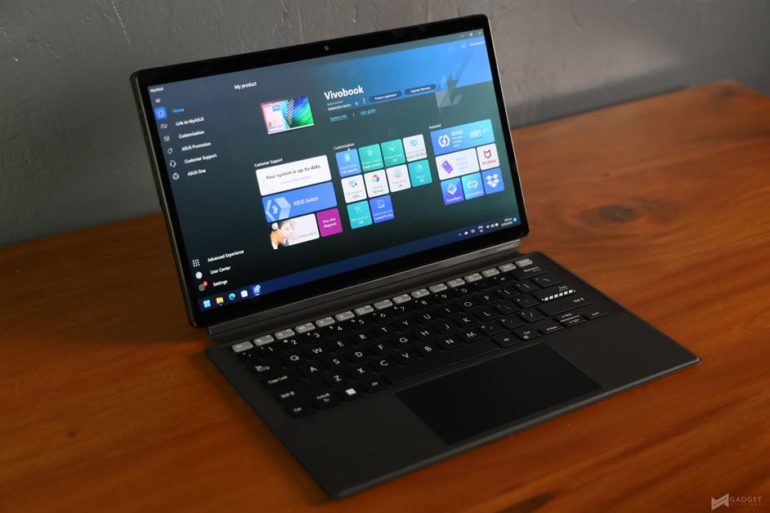
The Vivobook Slate 13 OLED comes pre-installed with Windows 11, which let’s face it, a lot of people like, and a lot of people don’t like (I personally haven’t upgraded).
As far as pre-loaded apps are concerned, the very first thing I did was uninstall the pre-installed anti-virus, because as far as I’m concerned, the default one that comes with Windows is more than enough. I also personally don’t like the default scaling and had to adjust it to 125%, as I think it looks better.
Apart from that, most of what you get are default Windows apps along with ASUS’ own apps like MyASUS, which gives you a ton of options to sort of personalize the laptop to your preferences in terms of performance, battery, connectivity, and even the display.
Battery
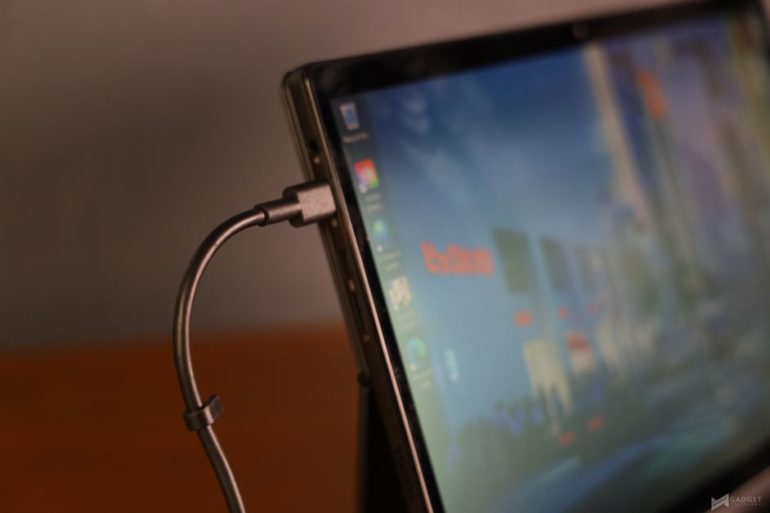
Speaking of which, there’s a 50Wh battery, which ASUS claims can last up to 9.5 hours in a single charge. That’s quite the longevity for something that’s only slightly more than a quarter of an inch thick, and something that weighs less than a kilo.
Add to that, you get a 65W power brick that allows for recharging the battery to 60% in just 39 minutes. The Vivobook Slate 13 OLED can also be charged using a power bank, which can come in very handy in instances when you forget to bring your charger.
Initial Verdict
The ASUS Vivobook Slate 13 OLED has an equal list of things to love about and things that make it sort of a niche product.
The OLED display is unquestionably excellent in terms of quality, the flexibility of being able to use it as a tablet and still run your favorite Windows apps in their full glory is a great advantage, and the ability to charge the device with a power bank is certainly a good plus.
On the other hand, you must really know what you’re getting into before buying this and set your expectations. The performance is just enough for the usual office tasks like documents, spreadsheets, presentations, email, as well as for media consumption, and very basic photo editing, and that’s not to say everything is smooth. You will get some occasional lag, especially when running multiple apps.
Then there’s the amount of storage that you get. I mean, I appreciate the rear camera, but I think I’d rather have more storage space in my laptop. You can have it configure to have up to a 256GB SSD, but even then, I just don’t think that’s enough.
If you fully accept those quirks and use this device how it’s meant to be used – as a tablet at times, and a laptop at times, and you’re okay with performance just enough for the tasks mentioned above, then I would say that for the price (PhP44,995 for the 8GB+128GB SSD model), it’s a decent choice.
You can get the ASUS Vivobook Slate 13 OLED at authorized retail outlets, Lazada, and Shopee. To find the nearest store near you, click here.
Emman has been writing technical and feature articles since 2010. Prior to this, he became one of the instructors at Asia Pacific College in 2008, and eventually landed a job as Business Analyst and Technical Writer at Integrated Open Source Solutions for almost 3 years.

